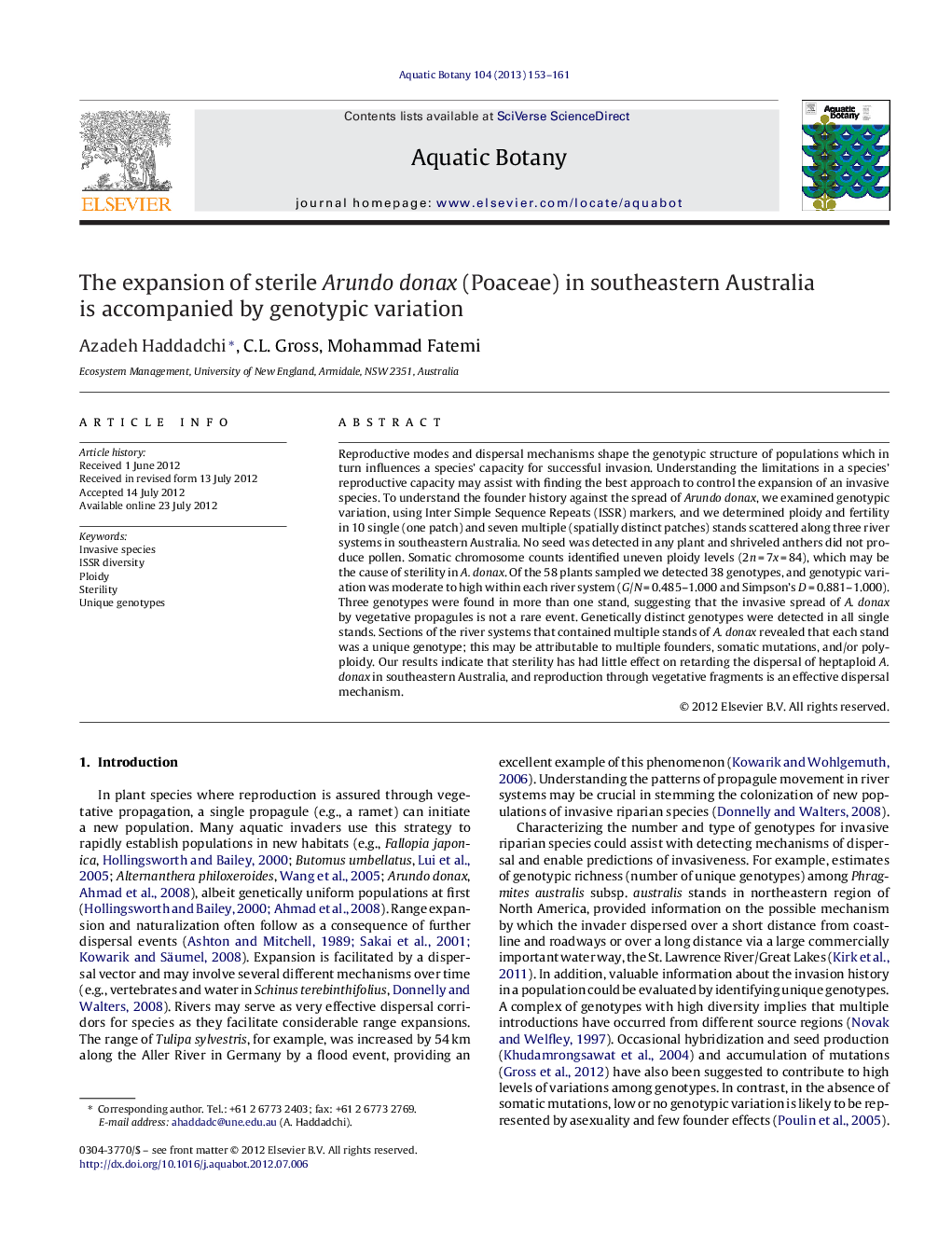| Article ID | Journal | Published Year | Pages | File Type |
|---|---|---|---|---|
| 4527978 | Aquatic Botany | 2013 | 9 Pages |
Reproductive modes and dispersal mechanisms shape the genotypic structure of populations which in turn influences a species’ capacity for successful invasion. Understanding the limitations in a species’ reproductive capacity may assist with finding the best approach to control the expansion of an invasive species. To understand the founder history against the spread of Arundo donax, we examined genotypic variation, using Inter Simple Sequence Repeats (ISSR) markers, and we determined ploidy and fertility in 10 single (one patch) and seven multiple (spatially distinct patches) stands scattered along three river systems in southeastern Australia. No seed was detected in any plant and shriveled anthers did not produce pollen. Somatic chromosome counts identified uneven ploidy levels (2n = 7x = 84), which may be the cause of sterility in A. donax. Of the 58 plants sampled we detected 38 genotypes, and genotypic variation was moderate to high within each river system (G/N = 0.485–1.000 and Simpson's D = 0.881–1.000). Three genotypes were found in more than one stand, suggesting that the invasive spread of A. donax by vegetative propagules is not a rare event. Genetically distinct genotypes were detected in all single stands. Sections of the river systems that contained multiple stands of A. donax revealed that each stand was a unique genotype; this may be attributable to multiple founders, somatic mutations, and/or polyploidy. Our results indicate that sterility has had little effect on retarding the dispersal of heptaploid A. donax in southeastern Australia, and reproduction through vegetative fragments is an effective dispersal mechanism.
► We studied invasion of three river systems by Arundo donax in southeastern Australia. ► We found that A. donax is sterile and heptaploid (7x). ► A. donax showed a medium to high level of genotypic variations.
